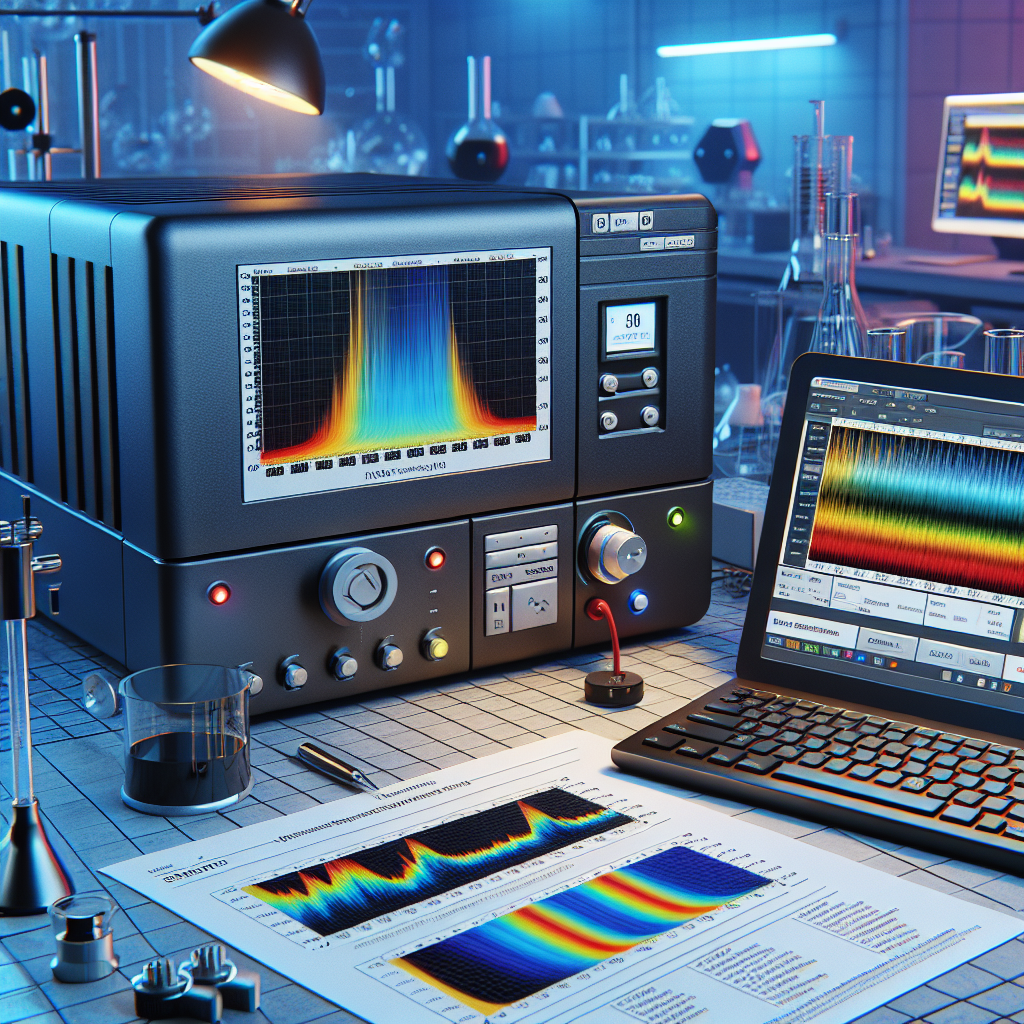
Achieving reliable results in near-infrared spectroscopy hinges on the preparation of samples. Researchers often face issues that reduce the accuracy of their analyses.
Techniques like grinding and sieving promote uniformity and consistency in the samples, which are essential for effective spectroscopy.
Environmental factors, such as moisture content, can have a marked effect on the performance of NIR spectrometers.
Case studies highlight successful methods that improve sample quality and enhance measurement precision. Focusing on these techniques allows researchers to refine their NIR analysis approaches and obtain more accurate results.
Click here to learn more about: spectroscience.com
Click here to learn more about: spectroscience.com
Understanding The Importance Of Sample Homogenization
Achieving uniformity in mixtures is fundamental within analytical practices. Ensuring consistency allows each measurement to accurately reflect the true characteristics of the analyzed material.
This method significantly contributes to eliminating variability, which could distort results.
When undergoing proper preparation, accuracy and precision in measurement techniques see marked improvement.
By reducing discrepancies, researchers enhance the reliability of their findings, aiding better decision-making in fields such as agriculture and livestock management. Different samples necessitate varied approaches, and choosing the appropriate technique is crucial for attaining optimal inspection results.
Transitioning from effective sample preparation techniques into the next phase requires attention to the methods employed for successful NIR calibration.

Techniques For Effective NIR Calibration
Achieving reliable results in near-infrared spectroscopy necessitates effective calibration methods. Accurate adjustments minimize errors and residuals during analysis, enhancing the productivity of analytical operations.
To begin, sample preparation is pivotal.
Proper grinding techniques ensure that samples are homogeneous, which is vital for consistent outcomes.
Employing appropriate calibration standards can significantly boost precision in results. Regular instrument validation is required to maintain accuracy over time.
Utilizing robust statistical methods in data analysis aids in developing reliable calibration models. Addressing common challenges early on ensures smoother operations in NIR analysis and elevates overall success while preparing for the next stage.
| Calibration Method | Importance |
|---|---|
| Effective Calibration Techniques | Minimize errors and enhance productivity |
| Homogeneous Sample Preparation | Ensures consistent outcomes |
| Regular Instrument Validation | Maintains accuracy over time |
| Robust Statistical Methods | Aids in developing reliable calibration models |
The Role Of Moisture Content In NIR Analysis
Achieving reliable results in analytical methods hinges on various factors, one of which is the influence of moisture on measurements. Variations in this parameter can significantly impact the quality of the data obtained from NIR spectroscopy.
Even minor fluctuations may lead to marked differences in the spectrum produced, complicating the calibration of the spectrometer used.
Ensuring a homogeneous moisture level during sample preparation is important for accurate analysis.
Best practices in managing moisture levels help guarantee that the NIR spectra genuinely reflect the true characteristics of each sample, thereby improving overall quality control in NIR analysis.
Analyzing Protein Levels Using NIR Spectroscopy
Utilizing advanced techniques allows for precise evaluation of protein concentration across various materials. NIR spectroscopy provides a unique modality for gathering essential data, especially notable in sectors such as food production and pharmaceuticals.
Preparing samples appropriately is necessary to yield dependable findings.
When conducting analysis using NIR, it is advisable to homogenize samples before NIR analysis for consistency across measurements.
Various sample preparation methods can improve the clarity of infrared analysis, thus enhancing spectral data quality. Addressing these factors is important for interpreting NIR spectra effectively during protein assessment.
NIR Spectroscopy in Protein Analysis
- NIR spectroscopy is effective in food production and pharmaceuticals for protein concentration evaluation.
- Homogenizing samples before NIR analysis ensures consistency and reliability across measurements.
- Proper sample preparation enhances the quality of spectral data, leading to more accurate protein assessments.
- Addressing sample preparation factors is crucial for effective interpretation of NIR spectra.
Optimizing Sample Preparation For Accurate Measurements
Precision in measurements relies heavily on the thoroughness of sample preparation. Employing methods such as reflectance spectroscopy, the quality of samples for NIR analysis is crucial to obtaining dependable results.
Variability in sample homogeneity can lead to discrepancies, resulting in inaccurate data.
To achieve reliable results, researchers must evaluate factors like sample size and thickness.
Utilizing chemometrics can enhance accuracy and minimize interference. Maintaining favorable environmental conditions is another aspect to consider.
Through these approaches, scientists can unlock the potential of NIR, gaining deeper insights into their analytical objectives, particularly when transitioning from analyzing protein levels to exploring NIR spectroscopy in agricultural research.
Exploring NIR Spectroscopy In Agricultural Research
Advanced techniques are revolutionizing agricultural research, enabling more precise evaluations of crops and soil. By utilizing ground and unground samples, researchers gain intricate insights into nutrient profiles essential for optimal cultivation.
For example, wheat samples were analyzed to determine how truly necessary certain fertilizers are for enhancing growth efficiency.
This method streamlines monitoring processes, empowering farmers to make informed choices that boost productivity.
With the application of such innovative practices, agriculture is evolving towards greater sustainability in food production.
Optimizing sample preparation for accurate measurements is a fundamental aspect of ensuring the reliability of results. Proper techniques can significantly influence the outcomes of analyses, making it crucial to refine the processes involved.
Enhancing NIR analysis with chemometric models plays a pivotal role in interpreting complex data, allowing for more robust conclusions regarding agricultural practices.
Advanced Agricultural Techniques
- Ground and unground samples provide detailed insights into nutrient profiles for crops.
- Analyzing wheat samples helps determine the necessity of fertilizers for growth efficiency.
- Streamlined monitoring processes enable farmers to make informed decisions that enhance productivity.
- Enhancing NIR analysis with chemometric models improves data interpretation for agricultural practices.
Enhancing NIR Analysis With Chemometric Models
Advanced analytical techniques are transforming agricultural research and driving innovations in assessment methodologies. Enhanced methodologies improve NIR spectroscopy for compositional analysis, empowering researchers to gain deeper insights into the composition of the sample.
Utilizing multivariate techniques available in chemometric models allows analysts to derive significant information from the NIR region of spectra.
Implementing these strategies aids in the interpretation of differences between NIR responses across individual samples.
Such advancements pave the way for non-destructive testing methods, which are advantageous in various agricultural applications. Transitioning to the next topic, it is important to address common errors in NIR sample preparation techniques, as these can impact the reliability of the analysis.
Common Errors In NIR Sample Preparation Techniques
Accurate measurements rely heavily on the meticulous nature of sample handling. Maintaining consistency in feed material is fundamental for effective multivariate analysis.
Errors, such as improper handling techniques or environmental fluctuations, notably influence spectral outcomes.
For instance, variations in temperature or humidity can substantially alter the determination of protein content.
Adhering to best practices while utilizing suitable sample sizes is important for the method for determination of protein. Addressing these common pitfalls can enhance efficiency and accuracy in NIR analysis.
| Measurement Factors | Impact on Spectral Outcomes |
|---|---|
| Sample Handling Techniques | Improper techniques can lead to measurement errors |
| Environmental Conditions | Fluctuations in temperature and humidity affect protein content determination |
| Sample Size | Adhering to suitable sizes is crucial for accurate analysis |
| Best Practices | Following best practices enhances efficiency and accuracy |
NIR Data Interpretation Spectrum Insights
Optimizing NIR Measurements NIR Mastery
NIR Data Interpretation Spectrum Insights
Optimizing NIR Measurements NIR Mastery


